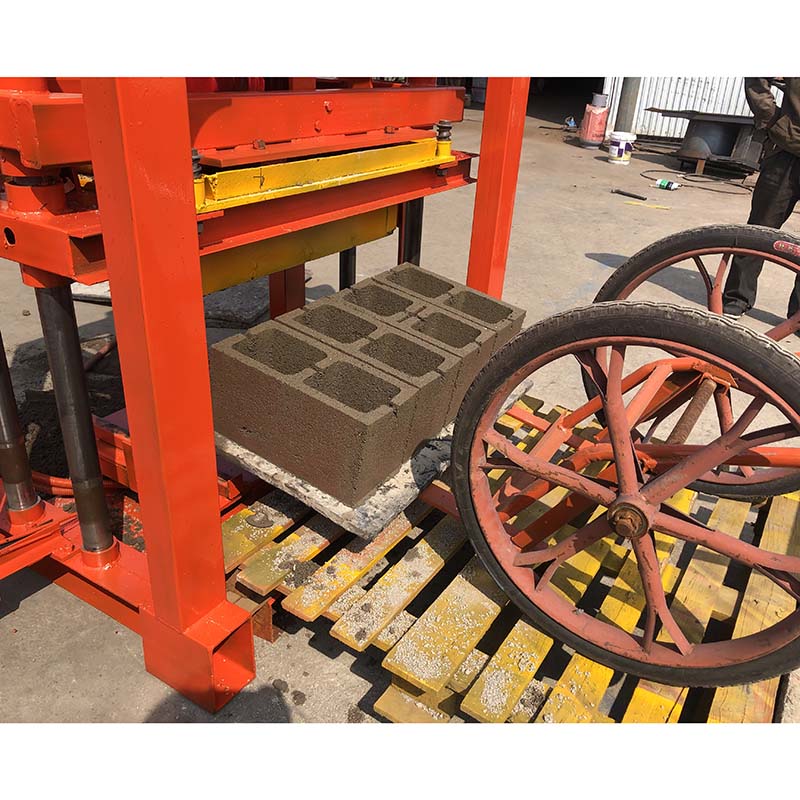
Image source:Aiwei block machine
Introduction
In the face of natural disasters and the pressing need for affordable housing, brick making machines have emerged as versatile tools that can address both challenges simultaneously. These machines offer a beacon of hope by providing efficient, cost-effective solutions for disaster relief and affordable housing initiatives. This article explores the remarkable potential of brick making machines in these critical areas, highlighting their role in rebuilding communities after disasters and ensuring dignified shelter for those in need.
1. The Dual Challenge: Disasters and Housing Shortages
Natural disasters, ranging from earthquakes and floods to hurricanes and tsunamis, frequently disrupt communities and devastate housing infrastructure.
- Humanitarian Crisis: Disasters displace millions, leaving communities vulnerable to harsh weather conditions and unsafe living conditions.
- Housing Shortages: Even in non-disaster scenarios, a lack of affordable housing is a global challenge, affecting millions worldwide.
2. Brick Making Machines: Catalysts for Resilience
Brick making machines have gained prominence as tools that can rapidly and efficiently contribute to disaster recovery and affordable housing initiatives.
- Rapid Deployment: Brick making machines can produce building materials on-site, expediting the rebuilding process.
- Cost-Effectiveness: Producing bricks locally reduces transportation costs and minimizes the need for external resources.
3. Disaster Relief: Rebuilding Communities
In disaster-stricken areas, brick making machines play a crucial role in the reconstruction process.
- Immediate Response: On-site brick production provides an immediate solution for shelter needs after disasters.
- Community Empowerment: Locally-produced bricks encourage community involvement, fostering a sense of ownership in rebuilding.
4. Benefits of Brick Making Machines in Disaster Relief
The adoption of brick making machines in disaster relief offers multifaceted advantages.
- Speed: On-site brick production accelerates the rebuilding process, ensuring timely shelter for affected populations.
- Resilience: Brick-built structures are more resilient to disasters, offering better protection against future calamities.
5. Affordable Housing: Breaking the Cycle of Poverty
Brick making machines address the chronic shortage of affordable housing in many regions.
- Cost-Efficient Construction: Locally-produced bricks significantly reduce building costs, making housing more affordable.
- Sustainable Solution: Brick-built housing has a longer lifespan, reducing maintenance and replacement costs.
6. Benefits of Brick Making Machines in Affordable Housing
The integration of brick making machines in affordable housing initiatives presents numerous benefits.
- Dignified Living Conditions: Brick-built homes provide safer and healthier living environments for low-income communities.
- Economic Empowerment: Reduced construction costs enable families to invest in other essential needs.
7. Sustainable Solutions: Disaster-Resilient and Affordable
Brick making machines contribute to sustainable housing solutions that withstand the test of time.
- Low Environmental Impact: On-site brick production reduces the carbon footprint associated with transportation.
- Longevity: Brick-built structures require fewer repairs and replacements, contributing to long-term sustainability.
8. Case Studies: Brick Making Machines in Action
Several regions around the world have harnessed the power of brick making machines for disaster relief and affordable housing.
- Nepal Earthquake: Brick making machines played a crucial role in post-earthquake reconstruction efforts.
- South Africa’s RDP Housing: Affordable housing initiatives have embraced brick making machines to provide dignified homes for low-income families.
9. Challenges and Considerations
While brick making machines offer transformative solutions, challenges must be addressed.
- Infrastructure: Ensuring access to reliable power sources and necessary infrastructure can be a hurdle in some regions.
- Skills Development: Training local communities in machine operation and maintenance is essential for sustainable solutions.
10. Collaborative Efforts: Government, NGOs, and Private Sector
Successful implementation of brick making machines in disaster relief and affordable housing requires collaboration.
- Government Support: Policies and incentives can encourage the adoption of brick making machines in disaster-prone areas.
- NGO Engagement: NGOs play a vital role in facilitating training, funding, and technical support.
- Private Sector Participation: Businesses can contribute by providing expertise, machinery, and resources.
Conclusion
Brick making machines offer a transformative solution to two of the world’s most pressing challenges: disaster relief and affordable housing. By providing communities with the means to rapidly rebuild after disasters and create dignified, resilient homes, these machines empower individuals and foster community resilience. Through collaborative efforts and a commitment to sustainable solutions, brick making machines demonstrate their potential to be catalysts for positive change, bridging the gap between crisis and recovery, and between homelessness and secure shelter.
